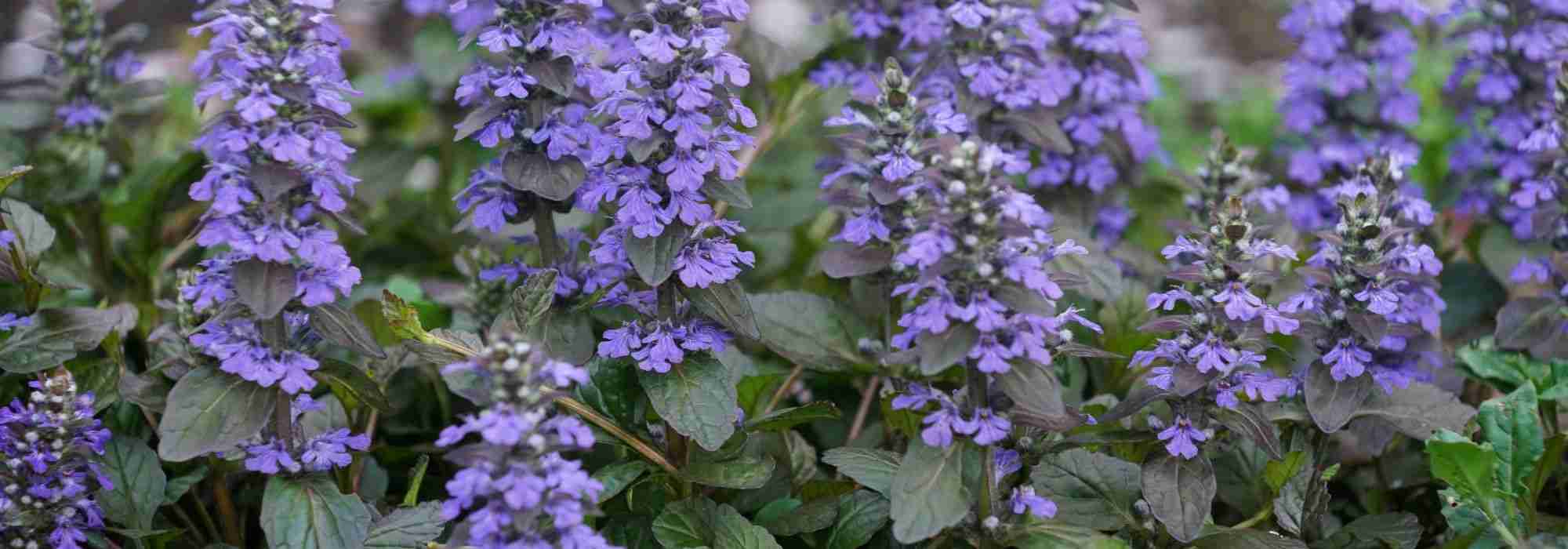
How to grow an ajuga in a pot?
Our tips for successfully growing creeping bugle in pots
Contents
The ajuga or creeping bugle is a perennial plant with blue, pink, or white spike flowers. It is highly valued for its evergreen foliage with a glossy dark green, purple, or variegated appearance.
Easy to grow, ajuga forms true little carpets that brighten up even shaded areas, thriving in the heaviest and dampest soils.
But beyond woodlands, borders, or slopes, ajuga also shines in a flowering pot. Its small size and creeping silhouette are indeed perfect for pot or window box cultivation.
Find our tips for choosing the best varieties, successfully planting, and properly maintaining ajuga in pots!
Which varieties of ajugas should you choose for pot cultivation?
The ajuga offers a small silhouette, barely exceeding 40 cm in height. Its spread reaches a maximum of 60 cm. Its small dimensions make it a perfect candidate for pot cultivation, to enhance small spaces, balcony planters, or bowls on the terrace.
Choose from the different varieties:
- Ajuga tenorii ‘Princess Nadia’, a compact variety with a less spreading habit than classic varieties and never invasive
- Ajuga reptans ‘Multicolor (Rainbow)’, aptly named with its purple foliage speckled with bright pink, cream, and green, serving as a backdrop to violet flowering
- Ajuga reptans ‘Purple Torch’, adorned with magnificent bright pink flowers in spring
- Ajuga tenorii ‘Dixie Chip’, featuring beautiful variegated foliage in green, cream, and pinkish-purple, highlighting the spring blue-lavender flowering
- Ajuga reptans ‘Sanne’, showcasing large spikes of white flowers in spring
- Ajuga reptans ‘Golden Glow’ with its blue flowers, but especially its evolving variegated foliage mixing yellow, pink, green, and turning purple
- Ajuga reptans ‘Gold Chang’, with its rare golden-yellow foliage revealing pink flower spikes in spring
- Ajuga reptans ‘Black Scallop’, featuring stunning foliage in bronze-chocolate hues with an almost black appearance, highlighted in summer by beautiful blue flowering
- Ajuga reptans ‘Alba’, which produces pure white flowers, enhanced by green foliage taking on bronze hues

The foliage of ajuga can vary greatly from one variety to another: Ajuga tenorii ‘Princess Nadia’, Ajuga reptans ‘Black Scallop’, and Ajuga reptans ‘Golden Glow’
Read also
12 perennials for heavy, wet soilWhen to plant an ajuga in a pot?
The aguja can be planted either:
- in autumn between late September and November, before the first frosts, to encourage rooting before winter
- in spring between February and April depending on the regions, before dry periods
Discover other Ajuga
View all →Available in 2 sizes
Available in 2 sizes
Available in 2 sizes
Available in 1 sizes
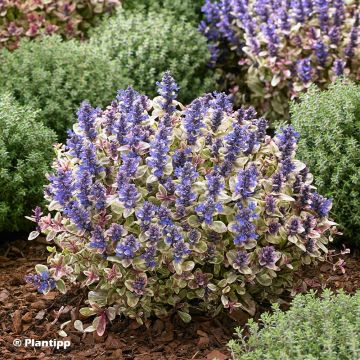
Available in 2 sizes
Available in 1 sizes
Available in 2 sizes
Available in 2 sizes
Available in 1 sizes
Available in 2 sizes
Planting Ajuga in Pots
The Container
The size of the container will depend on the spread of the creeping ajuga or bugle at ripeness. On average, count on 40 cm in diameter or width for the same depth.
Even though ajuga enjoys cool, moist soils, choose a perforated container to allow excess water to drain away without risking root rot for the plant.
Opt for a large pot, a trough, a planter, or a beautiful bowl. All materials (plastic, wood, ceramic, etc.) can be suitable: each has its advantages and disadvantages. For any pot planting, we generally recommend clay containers, as their porous material allows for better aeration of the substrate and limits drying out.
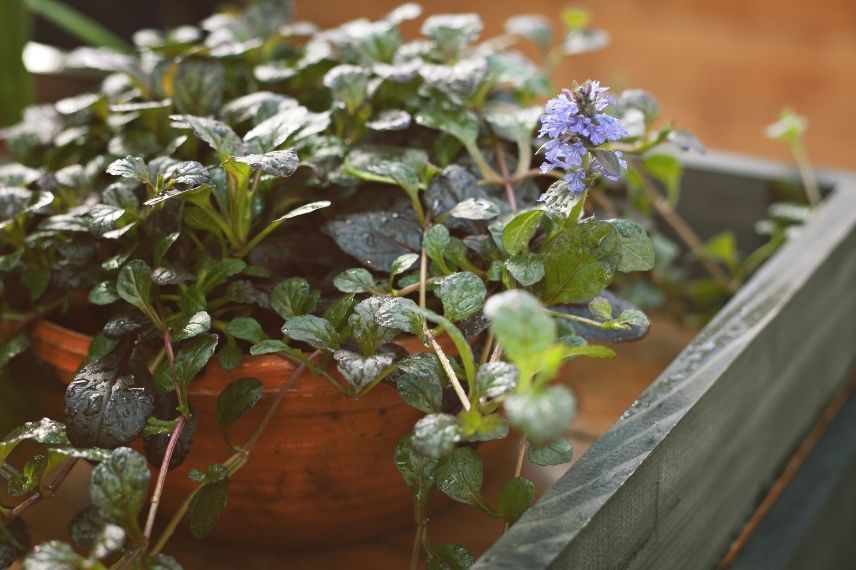
The Substrate
For the substrate, prepare a mixture of:
- half garden soil
- half potting compost or decomposed household compost
Planting
- Install a draining layer of 3 to 5 cm thick at the bottom of the container (gravel, clay balls, pumice, or terracotta shards).
- Place the plant in the centre of the container, then fill in with the substrate.
- Gently press down with your fingers.
- Water generously.
Exposure
Ajuga tolerates most exposures, whether shaded, semi-shaded, or sunny. It only fears scorching, drying full sun. Avoid therefore systematically the hottest spots in the south or west.
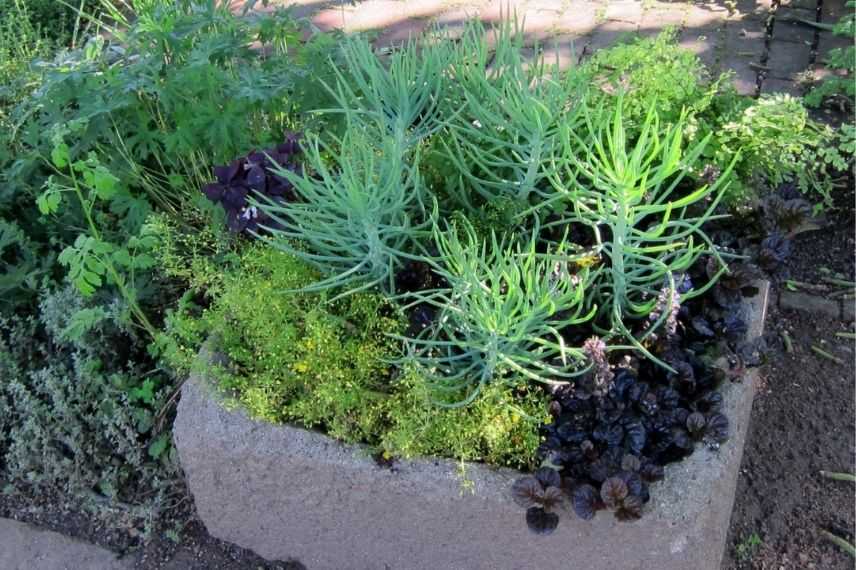
Ajuga with black foliage in a stone bowl, in a shaded situation (photo cultivar413 – Flickr)
Read also
Ajuga : growing and careCaring for Ajuga or Creeping Bugle in Pots
Ajuga is an easy-to-maintain plant that requires little care. However, like all potted plants, it will need more attention regarding watering and fertilisation than a specimen grown in the ground.
Watering
Ajuga prefers cool, moist soils, but not waterlogged. Watering should therefore be regular and sufficient, especially during the summer months.
If there is a lack of water for an extended period, the foliage will tend to curl before wilting.
Watering will be particularly important during the first year of pot planting. In the absence of rain, plan for 1 to 2 waterings per week and never allow the substrate to dry out completely.
Always water at the base of the plant, avoiding wetting the foliage to prevent the risk of developing fungal diseases.
A helpful tip: you can opt for a watering system using ollas (or oyas) to plant, which will help keep the substrate moist for longer and limit evaporation.
Fertilisation
In pots, the substrate tends to deplete more quickly. To encourage flowering and the plant’s overall health, you can add well-decomposed household compost or fertiliser for containers and pots in spring.
Pruning and Division
Pruning simply involves removing faded flowers and dead leaves as needed.
Maintaining ajuga mainly consists of limiting its spread, which occurs quickly due to its stolons. Separate them from the mother plant in spring or late summer. You can then easily replant them in other containers to develop new roots.
Every 2 to 3 years in autumn or at the end of winter, divide the clump to rejuvenate the plant.
Diseases
Robust, ajuga is not very susceptible to diseases. Just protect young plants from the appetites of slugs or snails in spring.
The foliage can be sensitive to powdery mildew. Always avoid wetting the leaves when watering. If symptoms occur, immediately remove the affected leaves.
Wintering
Most ajugas have very good frost resistance, with some varieties proving hardy down to -20°C. However, potted plants are more sensitive to the cold.
In regions with harsh winters, protect the base with a thick mulch, which should be removed in spring to allow new leaves to develop properly. If the foliage disappears after a severe frost, don’t panic; it will generally reappear the following spring.
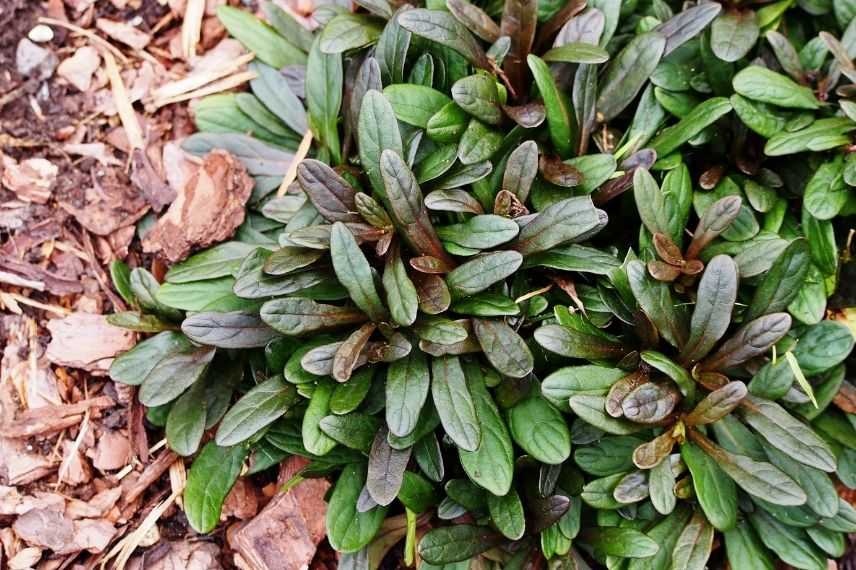
- Subscribe!
- Contents
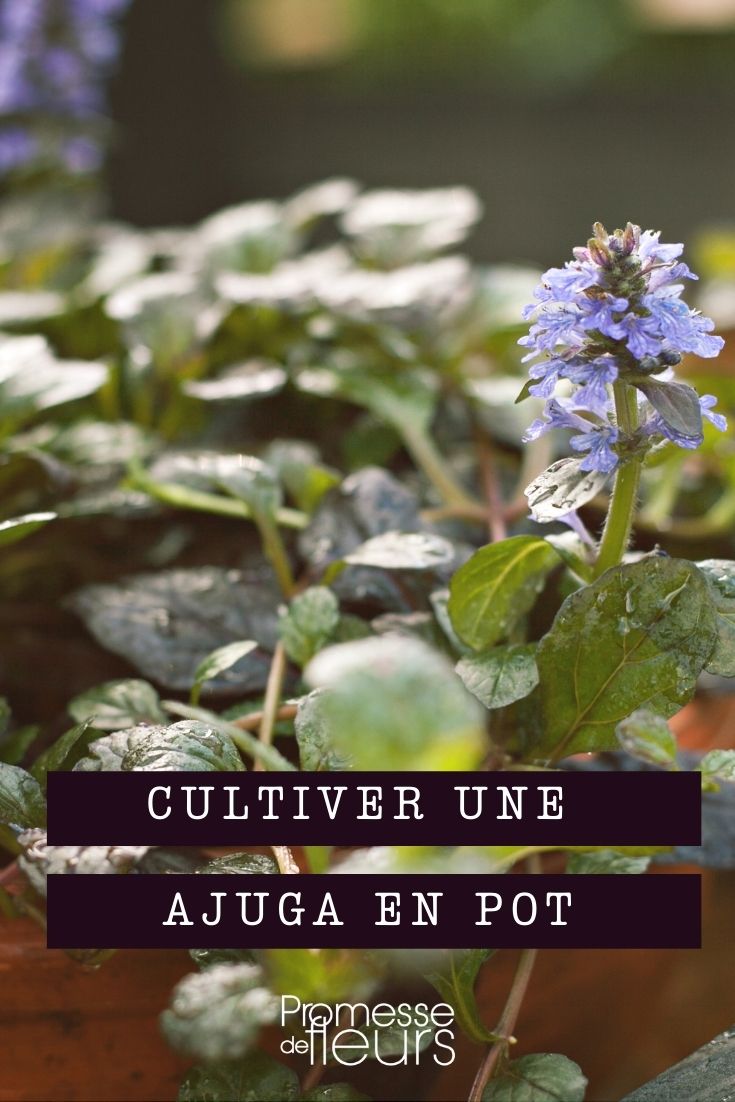































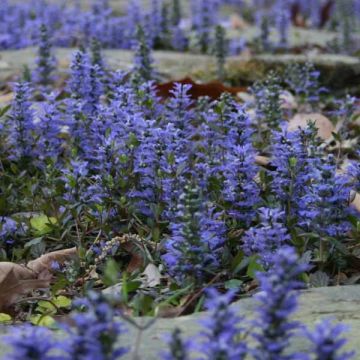
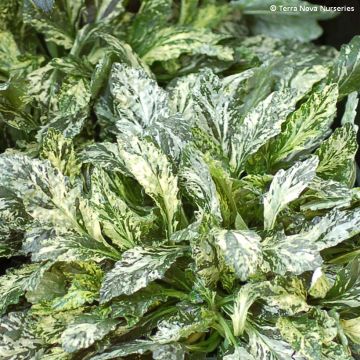
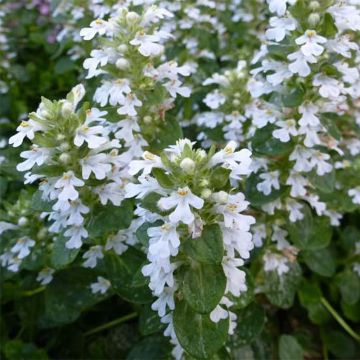
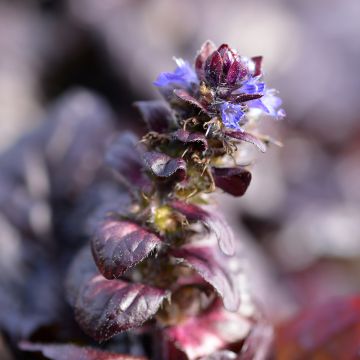
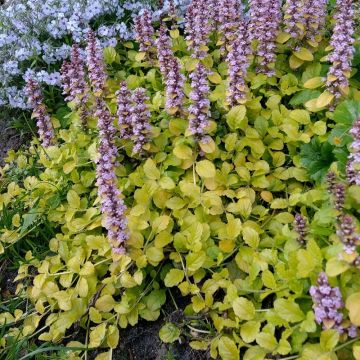
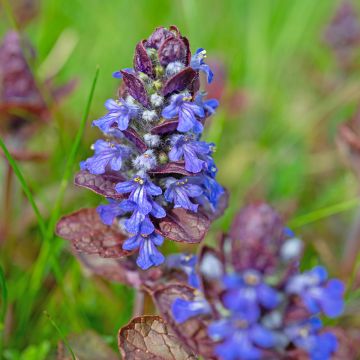
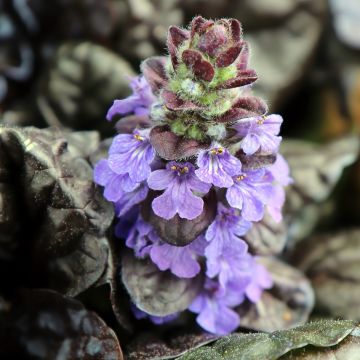
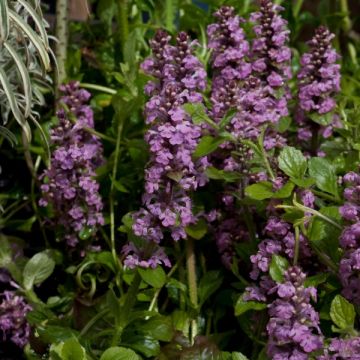
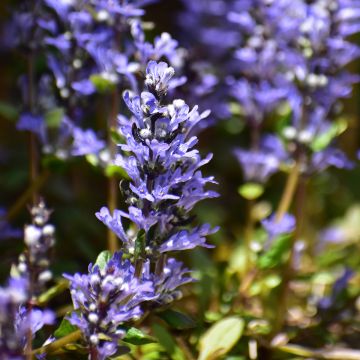
Comments